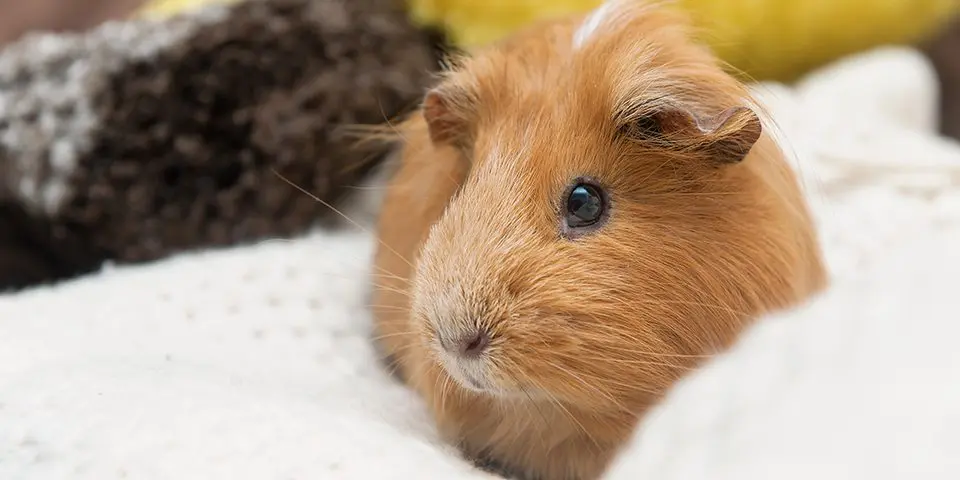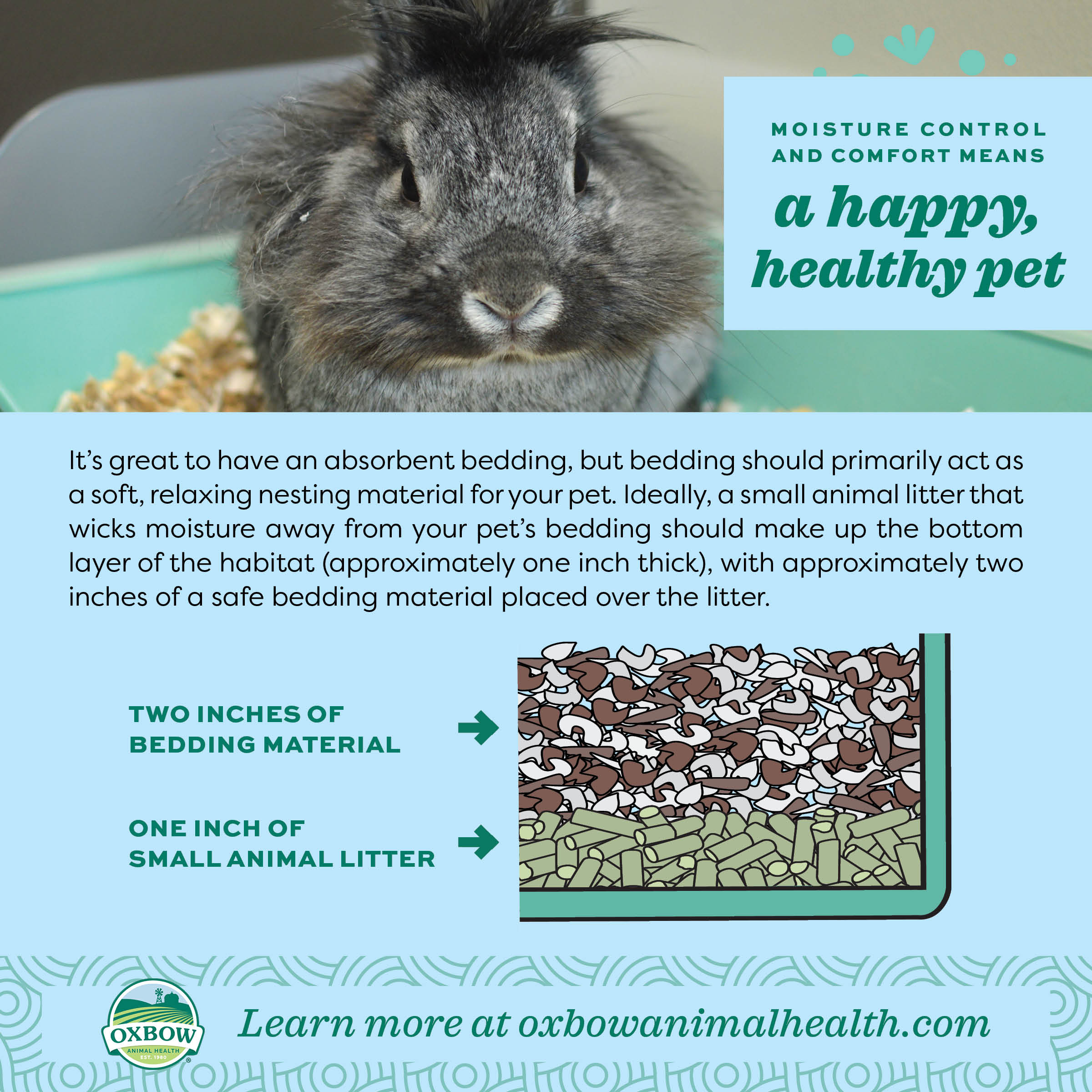Author: Kellie Hayden
Updated: April 9, 2024
Maintaining a clean living space is vital to your guinea pig’s health. A sanitary habitat helps prevent a wide array of respiratory, skin, and infectious illnesses that could result in expensive veterinary bills and possibly even a shorter lifespan for your pet. Read on to learn about some of the best guinea pig cage cleaning practices Oxbow recommends.
Enclosure Cleaning Basics
A guinea pig’s habitat should be completely cleaned at least once a week. This includes:
- Situating your guinea pig in a pet-proofed exercise pen with a hideout
- Properly disposing of all used litter and bedding in the habitat (or cleaning all fabric, if you use fleece bedding)
- Washing all hideouts and fabric-based items in your pet’s home
- Using a safe cleaner to wipe down the habitat
- Replacing fresh litter, bedding, and clean accessories into the habitat
- Placing your guinea pig back into their habitat
This weekly cleaning routine should also include scrubbing the interior and exterior of all water sources (bottles and dishes) and food bowls to remove any food or bacterial build up.
Make sure to dispose of your pet’s bedding, litter, and animal feces properly. Did you know that Oxbow’s Eco-Straw litter is compostable? You can dispose of soiled Eco-Straw in your own compost pile or in your commercial compost bin. If you plan to dispose of the litter in your own compost, first ensure that your composting process reaches adequate hot temperatures.

How to Spot Clean Your Guinea Pig’s Cage Daily
In addition to cleaning your guinea pig’s habitat and accessories completely once a week, spot cleaning should be done daily.
Spot cleaning can be done by removing soiled litter and bedding with a small food or litter scoop. Common areas that need to be spot cleaned in your guinea pig’s home are the corners of the habitat, and inside or underneath any hiding spaces. Make sure to spot clean any other areas where your guinea pig regularly spends their time relaxing. After removing the soiled material, add new litter and bedding as needed.
Spot cleaning and weekly cage cleaning should be part of your regular routine! You can include these tasks in a weekly planner or set reminders on your phone if you find you have trouble remembering. In addition to strengthening the bond between you and your pet, interacting with your guinea pig for at least an hour a day will also help you remember daily and weekly cleanings.
Watch for Damp Spots in Your Guinea Pig’s Enclosure
If you find multiple large damp spots in your pet’s habitat on cleaning day but spot clean daily, that might be a sign that your pet’s habitat needs to be fully cleaned more than once a week. Check that your pet’s water bottle is not leaking, and monitor your pet’s drinking and urination habits. Excessive water-drinking or urination could be a sign of illness that requires a vet visit.

Moisture Control + Comfort = A Happy Pet
It’s great to have absorbent bedding, but bedding should primarily act as soft, relaxing nesting material for your guinea pig. Ideally, a small animal litter that wicks moisture away from your pet’s bedding should make up the bottom layer of the habitat (approximately 1 inch thick), with approximately 2 inches of a safe bedding material placed over the litter.
What Kind of Cage Cleaner Should I Use?
The ideal cage cleaner will be marked as safe for small animals and will be free of any harsh scents. If you have trouble finding a cage cleaner, distilled white vinegar and water can be mixed into a clean spray bottle (1:1 ratio) and used in your guinea pig’s habitat.
Once your enclosure is empty, spray the interior and base with your 50/50 mix of water and distilled white vinegar. Use a washcloth to wipe down the habitat, then rinse the habitat well with water. The habitat should be completely dry before adding new litter and bedding.
If your guinea pig has recently been sick, ask your exotics veterinarian what they’d recommend using to clean the habitat. This way you can ensure your pet does not get sick again or spread the same illness to their cage mates.
Final Tip: Upgrade!
Larger habitats provide more living space for your pet. When pets have a larger living space, and pet parents spot clean daily, usually there is less residue that needs to be deep-cleaned from guinea pig habitats. This means less elbow grease on your part! Additional upgrades can also include a way for your pet to have daily access to a pet-proofed exercise space outside of the habitat where they can safely play and explore.
